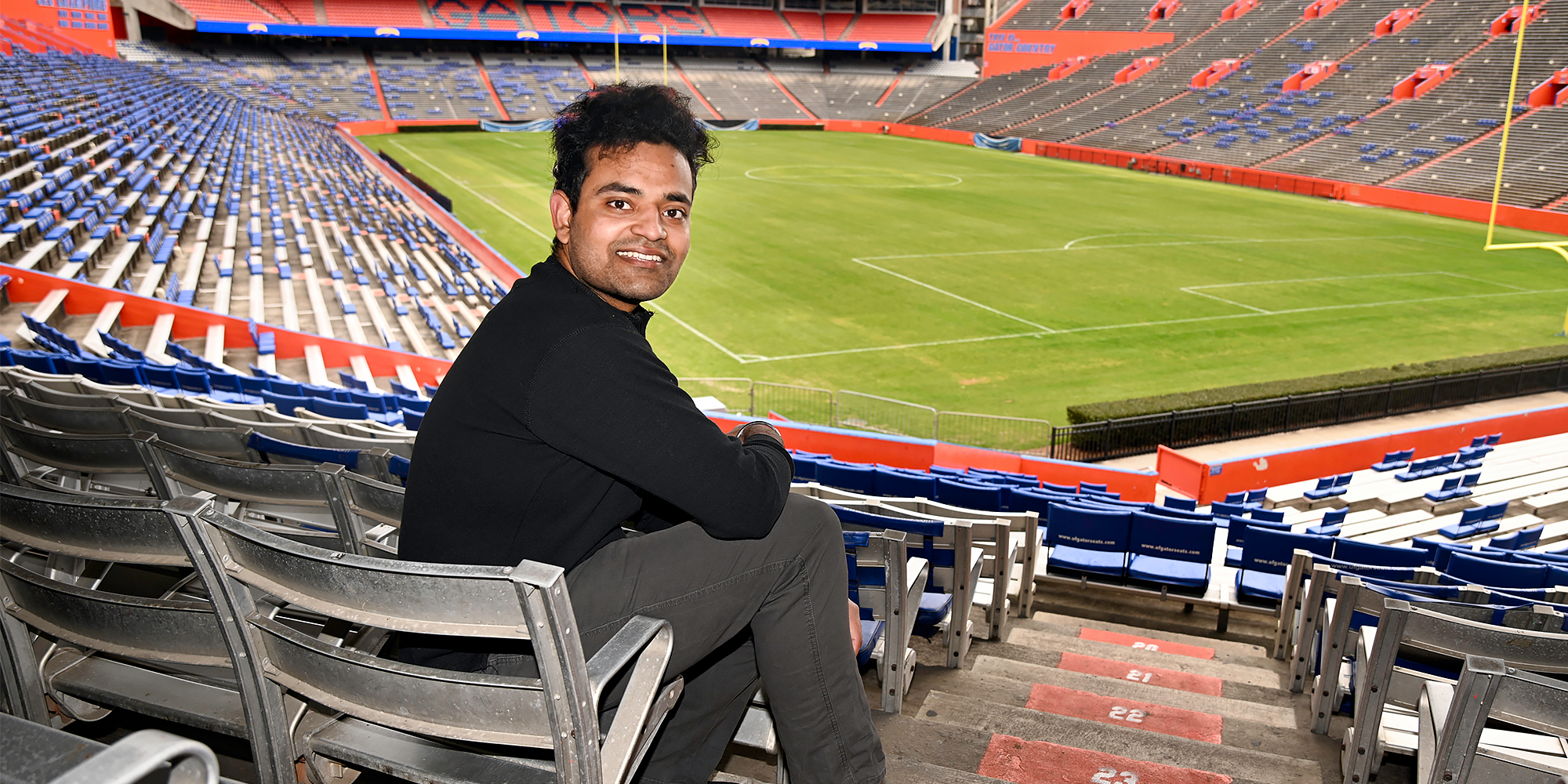Komalpreet Singh
Major: Environmental Health Engineering
Advisor: Andrew Altieri
Department: Engineering School of Sustainable Infrastructure & Environment, Department of Environmental Engineering Sciences.
Born and raised in Punjab, India, Komalpreet Singh always knew he wanted to be a scientist and researcher. After completing a master’s degree with a specialization in water resources from Punjab Agricultural University, he came to the University of Florida in 2022 to begin his Ph.D. in environmental health engineering – and become a major Gator football fan.
- What is the most interesting project you have worked on at UF and why?
We collected samples from various regions of Florida to understand how hurricanes impact vibrios. I played an active role in the team, both in the field during sample collection and in the lab during analysis. The samples included water and oyster samples. It was a unique experience for me, especially considering that our primary work is typically in a computational lab. The hands-on nature of this project was challenging and rewarding.
- What are your biggest accomplishments?
The Tampa Bay Times published our research on flesh-eating bacteria in Gulf waters after [Hurricane] Ian. I was awarded the Sally and William Glick Graduate Research Endowment Award in 2023. I was selected as a National Science Foundation’s GeoHealth Intern working with public health professionals to monitor human pathogens and bacteria in bodies of water.
- Where do you see yourself in 10 years?
Working in the field of public health, focusing on reducing waterborne biothreats such as vibrios, pathogens, and harmful algal blooms using geospatial data science tools.
- What are you reading, watching, or listening to?
I’m an avid reader and enjoy books like “Sherlock Holmes” and “The Intelligent Investor” by Benjamin Graham. My all-time favorite is “Inferno” by Dan Brown. Currently, I’m nearing the end of “How I Met Your Mother.” I also enjoy watching “The Office,” “Friends,” and “Young Sheldon.”
- Where do you see yourself in 10 years?
Working in the field of public health, focusing on reducing waterborne biothreats such as vibrios, pathogens, and harmful algal blooms using geospatial data science tools.

